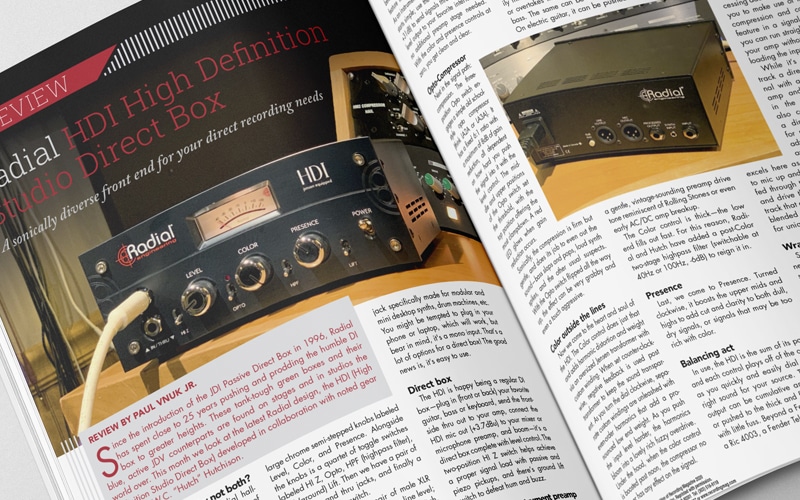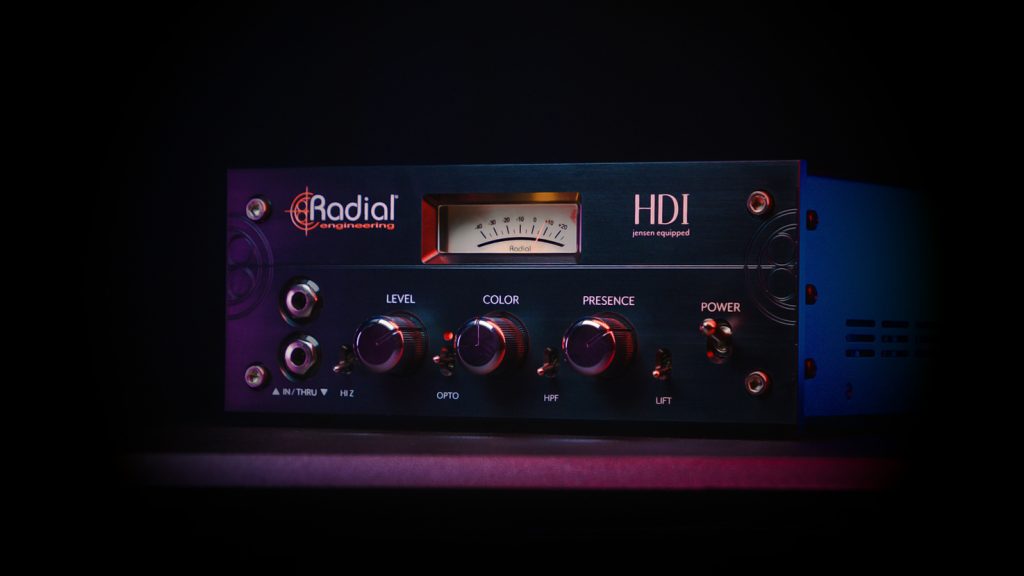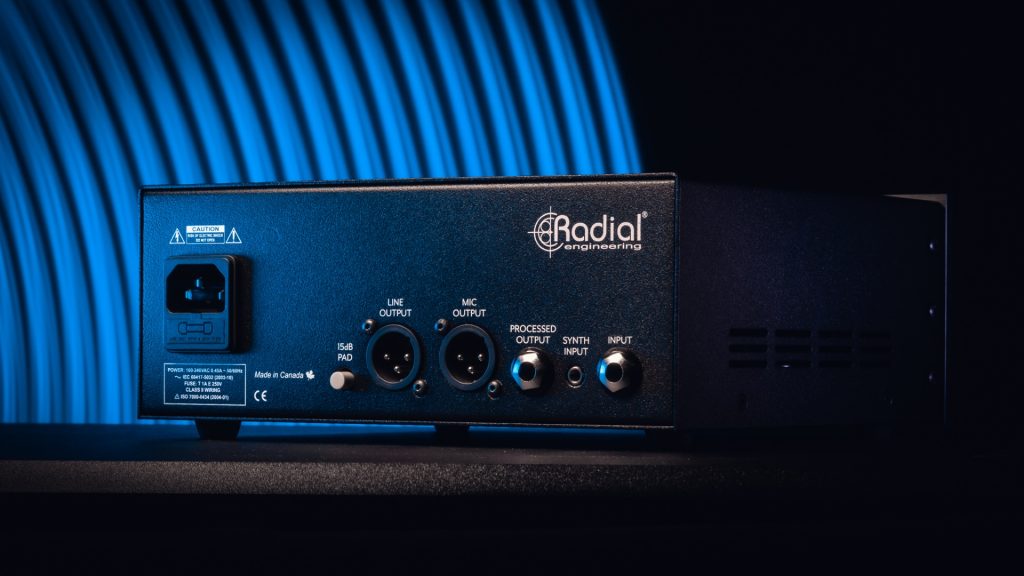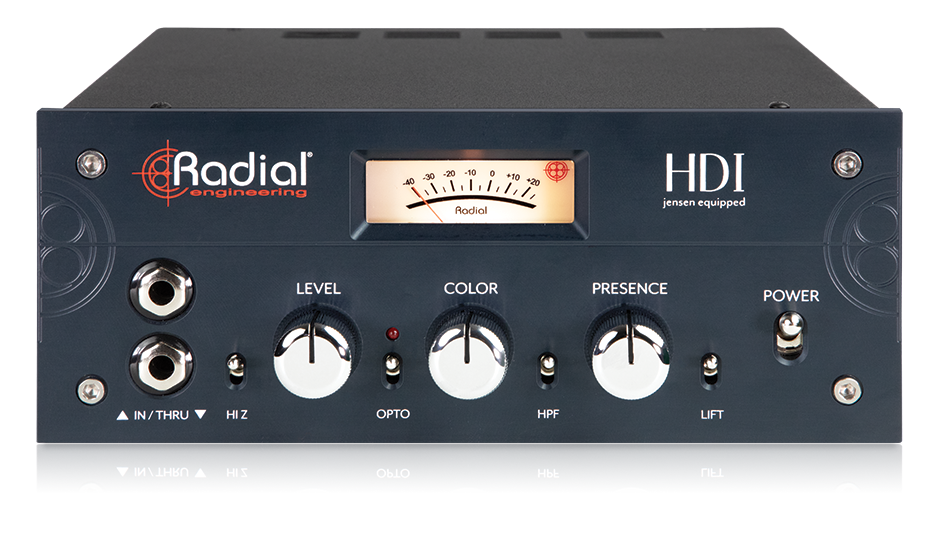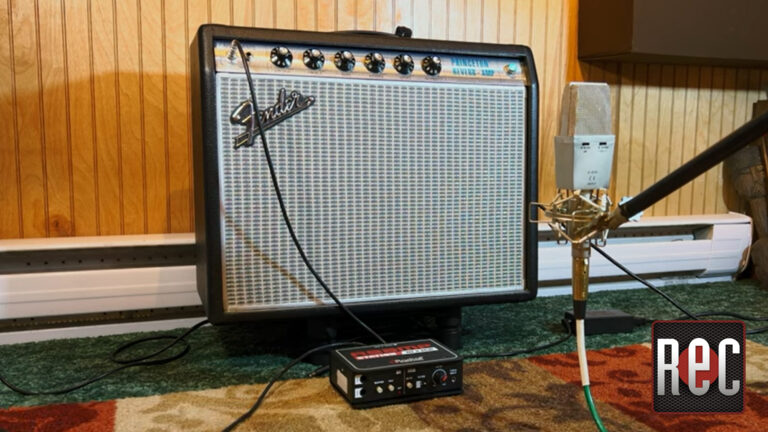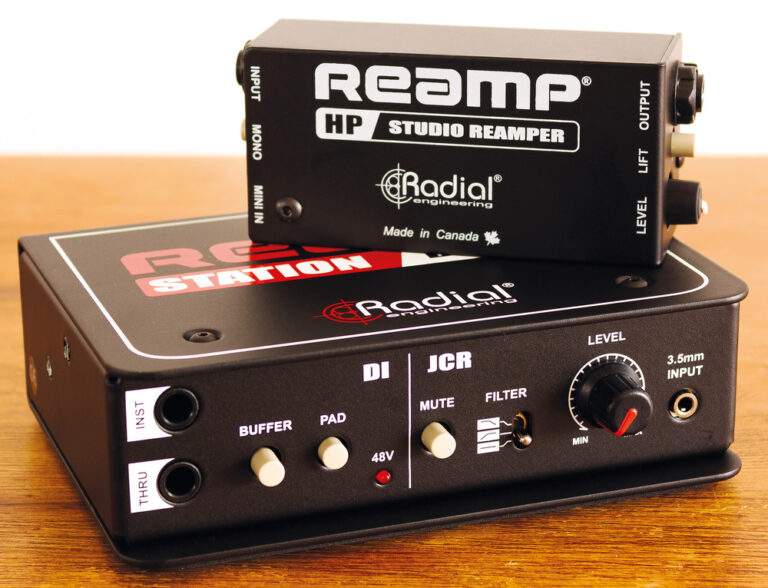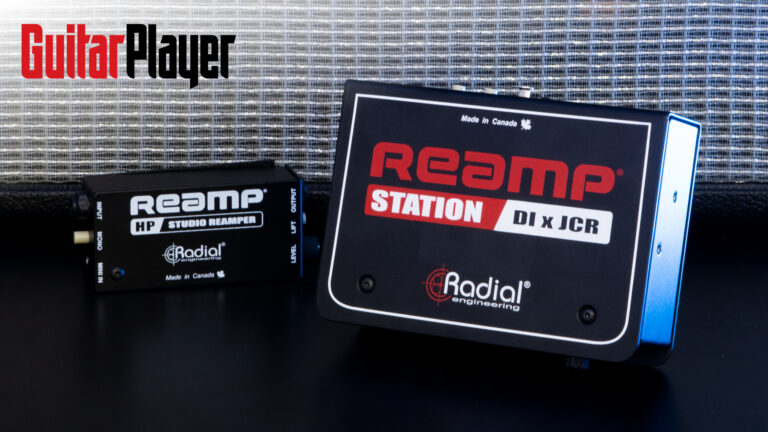The following is written by Paul Vnuk Jr. from Recording Magazine. See the Review Here
Since the introduction of the JDI Passive Direct Box in 1996, Radial has spent close to 25 years pushing and prodding the humble DI box to greater heights. These tank-tough green boxes and their blue, active JDV counterparts are found on stages and in studios the world over. This month we look at the latest Radial design, the HDI (High Definition Studio Direct Box) developed in collaboration with noted gear designer W.C. “Hutch” Hutchison.
Clean or Colored: why not both?
Sonic transparency is a Radial hallmark. With ‘High Definition’ as part of its name, the HDI abides—it’s designed to be the cleanest Radial direct box todate, but this time around, thanks to its dual topology, the HDI also stands as being the most colorful direct box Radial has ever produced.
Classy, bold, and big!
The HDI is a half-space 2U device, comfortable either sitting on a desktop or racked up with the included brackets. It has a beautiful deep blue faceplate made of thick, etched aluminum. Top and center is a backlit VU meter and a trio of large chrome semi-stepped knobs labeled Level, Color, and Presence. Alongside the knobs is a quartet of toggle switches labeled HI Z, Opto, HPF (highpass filter), and (ground) Lift. Then we have a pair of 1/4″ TS In and Thru jacks, and finally a front-side power switch.
On the back are a pair of male XLR outputs with a choice of mic or line level; the line output has a -14dB pad switch. There’s also a 1/4″ TS output option that carries all the HDI processing; this is intended for feeding instrument rig amp heads and devices with instrument-level inputs. If that isn’t enough, there are two additional inputs on the back panel: another 1/4″ TS, and then a 3.5mm mini jack specifically made for modular and mini desktop synths, drum machines, etc. You might be tempted to plug in your phone or laptop, which will work, but it is only a mono input. That’s a lot of options for a direct box! The good news is, it’s easy to use.
Direct box
The HDI is happy being a regular DI box—plug in (front or back) your favorite guitar, bass or keyboard, send the front-side thru out to your amp, connect the HDI mic out (+3.7dBu) to your mixer or microphone preamp, and boom—it’s a direct box complete with level control. The two-position HI Z switch helps achieve a proper signal load with passive and piezo pickups, and there’s ground lift switch to defeat hum and buzz.
Full-featured instrument preamp
The HDI is also an instrument preamp, but the beauty here is that it’s not an either/or type of thing; the DI and preamp features commingle freely, but they use different outputs. The line out is +25dBu, the mic out is +3.7dBu and the processed 1/4″ out is +8dBu (more on this below). The XLR mic and line outs each feature their own isolated transformer. As an instrument preamp, again, the HDI starts simple; use the level control (-3 to +31dB) to send signals through the line level output to your favorite interface—no additional preamp stage needed. With the color and presence controls at zero, you get clean and clear.
Opto-Compressor
Next in the signal path: compression. The three-position Opto switch engages a simple old school-style opto compressor (think LA2A or LA3A). The compressor has a fixed 6:1 ratio with a maximum of 8dB of gain reduction, all dependent on how hard you push the signal into it with the level control. The middle and upper positions of the Opto switch set the threshold, with the top position offering the most clampdown. A red LED glows when gain reduction occurs.
Sonically, the compression is firm but gentle, and does its job to even out the sound—bass slaps and pops, loud synth spikes, and the other usual suspects. With the Opto switch flipped all the way up, the effect can be very grabby and even a touch aggressive.
Color outside the lines
Now we come to the heart and soul of the HDI. The Color control does just that and adds harmonic distortion and weight via an oversized Jensen transformer with custom winding. When set counter-clockwise, negative feedback is used post transformer to keep the sound transparent. As you turn the dial clockwise, this is removed, and separate custom windings are unleashed with even-order harmonics that add a pronounced low end weight. As you push the input level harder, the harmonics bloom into a lovely rich fuzzy overdrive. Under the hood, when the color control is boosted past noon, the compressor no longer has any effect on the signal.
Harmonic drive
From the Empirical Labs Distressor to the Bettermaker Bus Compressor, many analog devices offer various harmonic drive options. Most of these lean toward the subtle side for filling out the sound and adding a hint of grit. Not so on the HDI—it can get close to gentle stompbox or vintage console drive. On bass, I enjoy how it fuzzily fills out the sound but never obscures or overtakes the punch and tone of the bass. The same can be said for synths. On electric guitar, it can be pushed into a gentle, vintage-sounding preamp drive tone reminiscent of Rolling Stones or even early AC/DC amp breakup.
The Color control is thick; the low end fills out fast. For this reason, Radial and Hutch have added a post-Color two-stage high-pass filter (switchable at 40Hz or 100Hz, -6dB) to reign it in.
Presence
Last, we come to Presence. Turned clockwise, it boosts the upper mids and highs to add cut and clarity to both dull, dry signals, or signal that may be too rich with color.
Balancing act
In use, the HDI is the sum of its parts, and each control plays off of the others as you quickly and easily dial in the right sound for you source. The HDI output can be cumulative and subtle, or pushed to the thick and fuzzy edge with little fuss. Beyond a Fender P-Bass, a Ric 4003, a Fender Telecaster, and a direct Epiphone acoustic, all of which interacted wonderfully with the HDI, I especially enjoyed it on my 70s Fender Rhodes. It was easy to add a speck of nice top end dirt that was quite responsive to playing style.
I used the HDI direct into my Universal Audio Apollo X16 at line level. I had even more fun running it from the XLR output into a few tube and solid state preamps for even more tonal variations. If you want to add more drive and color, you can run a line out into your preamps and engage the pad. The 1/4″ processed out is the equivalent of having a thru with processing added, allowing you to make use of the compression and color features, in a signal that you can run straight into your amp without overloading the input.
While it’s typical to track a direct bass signal with a miked bass amp and blend them in the mix, it’s now also common to track a direct guitar signal for reamping or taking advantage of virtual amp plugins. The HDI excels here as well, but it’s also fun to mic up and track your favorite amp fed through the thru, but then fuzz out and drive the direct guitar signal and track that as well. This can offer a great blended sound, or even split in stereo for unique guitar tones.
Wrap up
Since the HDI offers so much connectivity (even a 1/8″ input!) and gain stage possibilities, as well as tonal options and a simple and effective compressor, it’s tough to find anything to gripe about. $800 is a bit more than most of us want to spend when we’re thinking about picking up a new direct box, but the price is in line with high quality mic preamps, and dang, this thing is versatile, powerful, and sounds great clean and dirty.

